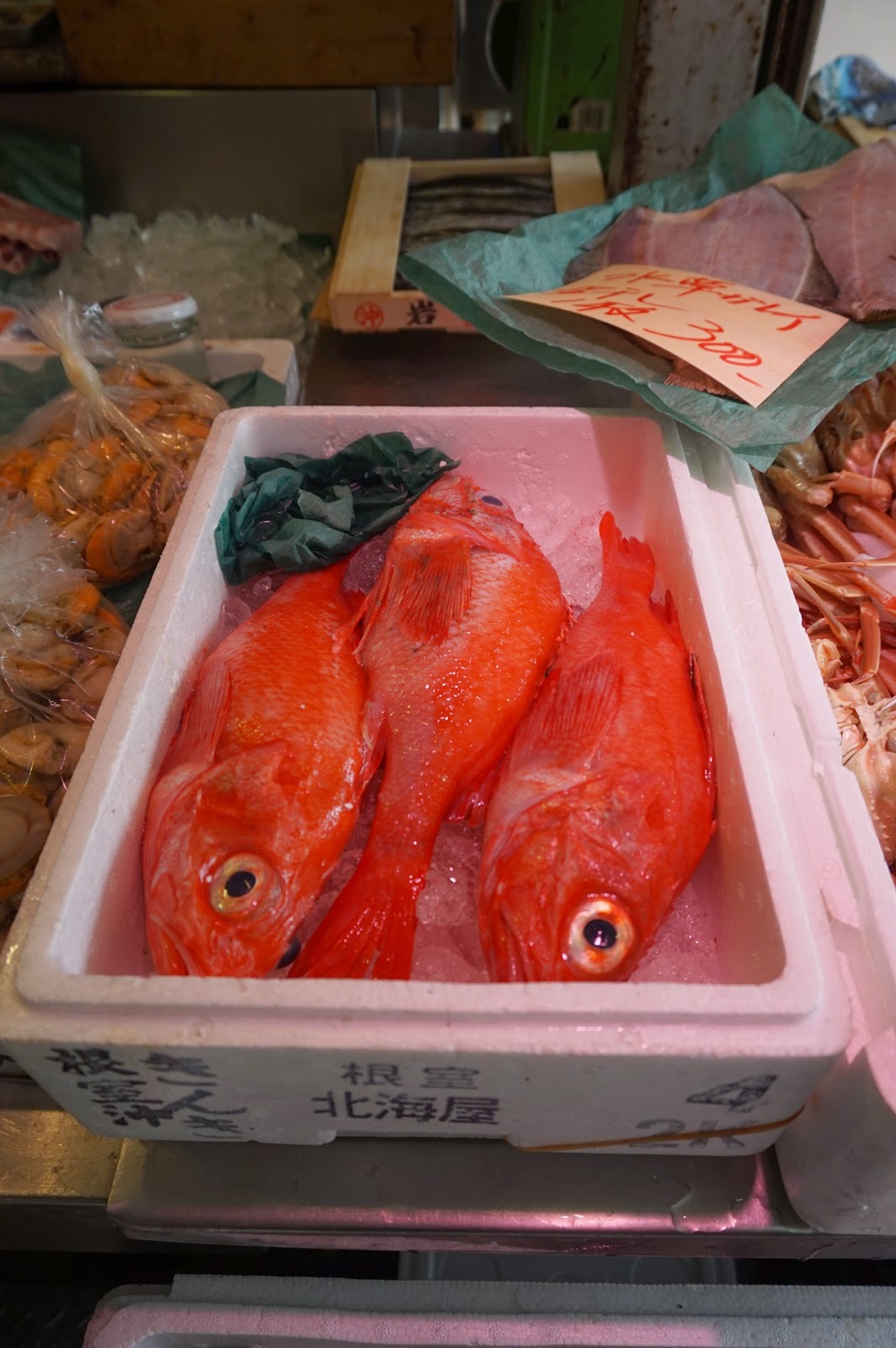What's Nokke-don, you may ask? Just think of it as a chirashi bowl (sashimi on rice), except you got to assemble your own by pick and choose your own toppings. And here's how the "Nokke-don" system works at Furukawa Market - You first walked up to the Information Counter and buy a booklet of coupons (in 5s or 10s with each coupon worth 100 yen plus tax). Those coupons then became the common currency at the market for which you could use to pay.
Now armed with the booklet of coupons, you start by visiting one of the shops for the bowl and rice. Shops participating in this scheme (almost all of them inside the market do anyway) can be identified by a little colored flag displayed outside the shop - a red flag indicating shops selling rice, and blue indicating shops selling different toppings. One coupon will get you a regular portion of rice, two will get you a bigger bowl.
There were more than a few dozens stalls each selling something different. Once you saw something you want, just let the shopkeepers know and hand them over your bowl. They will then help you put the items on top of the rice. Aomori is famous for its bluefin tuna (meguro) and scallops (hotate) so obviously those are the more popular choices, but other than that basically they got everything you could think of, from seasonal fish to sea urchin to salmon roes to different kinds of shellfish to a few Aomori specialties such as Namako (sea cucumber) or salt-cured seafood. There are also non-seafood items such as vegetable pickles or pieces of Japanese scrambled eggs (tamago-yaki) if you want some variety, or you could accompany your rice bowl with a bowl of hot soup. We paid one coupon for a bowl of soup made with miso and the scallop trimmings and it was hearty and super delicious.
In our experience, 10 coupons (1000 yen) is a good starting point which will well get you enough toppings to fill your bowl. But in any event when you found yourself running short, just go back to the information counter to top up with more coupons (just bear in mind they are sold only in the denomination of 5s), or in some cases, I am sure they are as happy to take cash. Once you are done picking everything you wanted, just settle in one of the dining area around the market where there were tables and chairs with utensils, condiments (soy sauce and wasabi) and drinks (free tea and water) available, and you could sit down and enjoy the food comfortably.
The market was not very crowded by the time we got there at around 8am so we had no problems walking around and finding a seat - the market opens daily from 7am to 4pm, except on their occasional rest days which they would post online, but it did get quite lively later on with grocery shoppers and people - tourists and locals - going for a bowl of nokke-dons, so if you want to avoid the crowd especially during the peak season, it's best to hit this as your first stop of sightseeing.
To us it was absolutely fun speeding around looking at aisles of fresh seafood on display, picking and choosing whatever that caught your attention, and with that price, we felt like kids walking into a toy store with a carte blanche and the freedom to grab whatever in sight. This is not only about the food, but the experience too, and from our brief stay in Aomori, the Furukawa Market was definitely our favorite spot in town, and went on as one of our best memories in the entire trip too.
You can find more information about the market on their website: http://www.aomori-ichiba.com/nokkedon. Do double check on their site for the opening days and hours before you plan your itinerary - bearing in mind they do close occasionally.
When? March 22 2015
Where? Aomori Gyosai Center, Furukawa 1-11-16, Aomori City, Aomori Prefecture, Japan
青森魚菜センター 〒030-0862青森市古川1-11-16
(Part of the Japan Rail Trip 2015 Series - check out the rest of our journey by clicking on the link! More to come!)














No comments :
Post a Comment